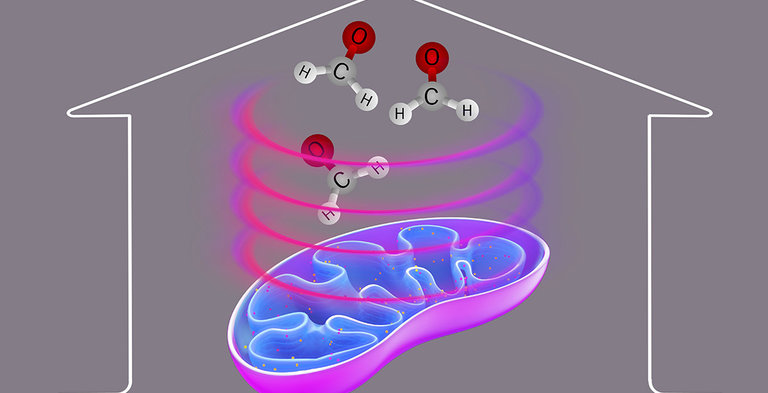Bize, Cécile, De Pooter, Ambre, Vincent, Gaëlle
32nd IFSCC Congress 2022
"""Pollution is a global health concern. The effects of systemic exposure to different types of pollutants are now well described, and the effects on skin are of growing interest.Indeed, as a physical barrier between the body and the external environment, skin is challenged everyday by pollutants.
The indoor environment has always been considered free from health-damaging pollutants. However, indoor air quality may be far from perfect. The quality of indoor air is influenced by ventilation systems (air conditioning, humidifier system), combustion products, cleaning products, office equipment and furnishings, surface coatings, levels of microbial flora (mould, bacteria) and endotoxins (Dales et al., 2008).
In developed countries, a majority of people spend up to 90% of their time indoors: at home, at work, at school, in transport or in shops or restaurants (Dales et al., 2008; Eltzov et al., 2019). Compelling evidence suggests that volatile organic compounds (VOCs), which are an important indoor source of air pollutants, have potentially harmful effects to the skin. In particular, VOCs are known to have a negative impact on skin health especially on mitochondrial functions, leading or contributing to some disorders such as accelerated skin ageing.One of the most harmful and injurious VOC is formaldehyde (HCHO). In this context, we have evaluated the effect of formaldehyde on mitochondrial homeostasis on human primary keratinocytes.The primary function of mitochondria is to produce ATP for cellular metabolism. Interestingly, ATP production was significantly reduced after exposure to formaldehyde by 43% (p<0.001).At the molecular level, mitochondria convert the mitochondrial membrane potential into ATP with the help of the mitochondrial respiratory complex. So, we next examined if formaldehyde exposure resulted in a drop in mitochondrial membrane potential. Mitochondrial membrane potential was observed using the JC-1 probe. The red-to-green fluorescence intensity was used to quantify the mitochondrial membrane potential.Formaldehyde demonstrated a significant decrease in JC-1 red-to-green fluorescence following treatment by 46% (p<0.001). So, as expected, the drop in ATP content was concomitant with the one of mitochondrial membrane potential.Because MOTS-c (Mitochondrial open reading frame of the 12S ribosomal RNA type-c), a mitochondrial-derived peptide, plays a role in metabolism regulation and can be activated by oxidative stress, we examined whether formaldehyde exposure resulted in a modulation of MOTS-c protein level. Results clearly showed that formaldehyde treatment induced a significant decrease in MOTS-c level in keratinocytes (-54%, p<0.001).To see whether this metabolism collapse could induce alterations in mitochondrial ROS production, we next measured sirtuin 3 (SIRT3) protein level using immunolabeling. Indeed, SIRT3 has shown to be correlated with oxidative stress by deacetylation of SOD2, a mitochondrial antioxidant enzyme. Formaldehyde drastically reduced SIRT3 protein level in keratinocytes by 93% (p<0.05).
The degradation of oxidized proteins in mitochondria is essential to maintain mitochondrial homeostasis. To characterize the effects of formaldehyde exposure on proteasome activity, we next studied the effect of formaldehyde exposure on Lon protease activity.As LONP is an ATP-stimulated protease and formaldehyde induced a significant decline in ATP synthesis in keratinocytes, formaldehyde exposure should also decrease LONP level.As expected, formaldehyde treatment induced a drastic significant decrease in LONP level in keratinocytes (-98%, p<0.01). All these data suggest that formaldehyde induced mitochondrial metabolism dysfunction and down-regulated antioxidant activity and mitochondrial proteolysis.As SM3 is a multimineral active ingredient increasing cell metabolism (ATP production) and cell regeneration, we evaluated its effects on alterations induced by formaldehyde exposure on mitochondrial functions.Not only SM3 protected mitochondria from drops in ATP production (29%, p<0.05) and mitochondrial membrane potential induced by formaldehyde exposure (32%, 0.05<p<0.1) but also from the decrease of MOTS-c protein level (112%, p<0.01). SM3 also protected mitochondria from the downregulation of SIRT3 induced by formaldehyde treatment (37%, p<0.05) and thereby protected antioxidant activity of mitochondria. Finally, SM3 protected from alterations of mitochondrial proteasome and then cellular homeostasis by limiting formaldehyde deleterious effects on LONP activity (55%, p<0.05).Then, SM3 is a promising active ingredient for protecting skin from damage induced by indoor pollution."""
Seppic Research and Innovation, 50 boulevard National, La Garenne Colombes, France

